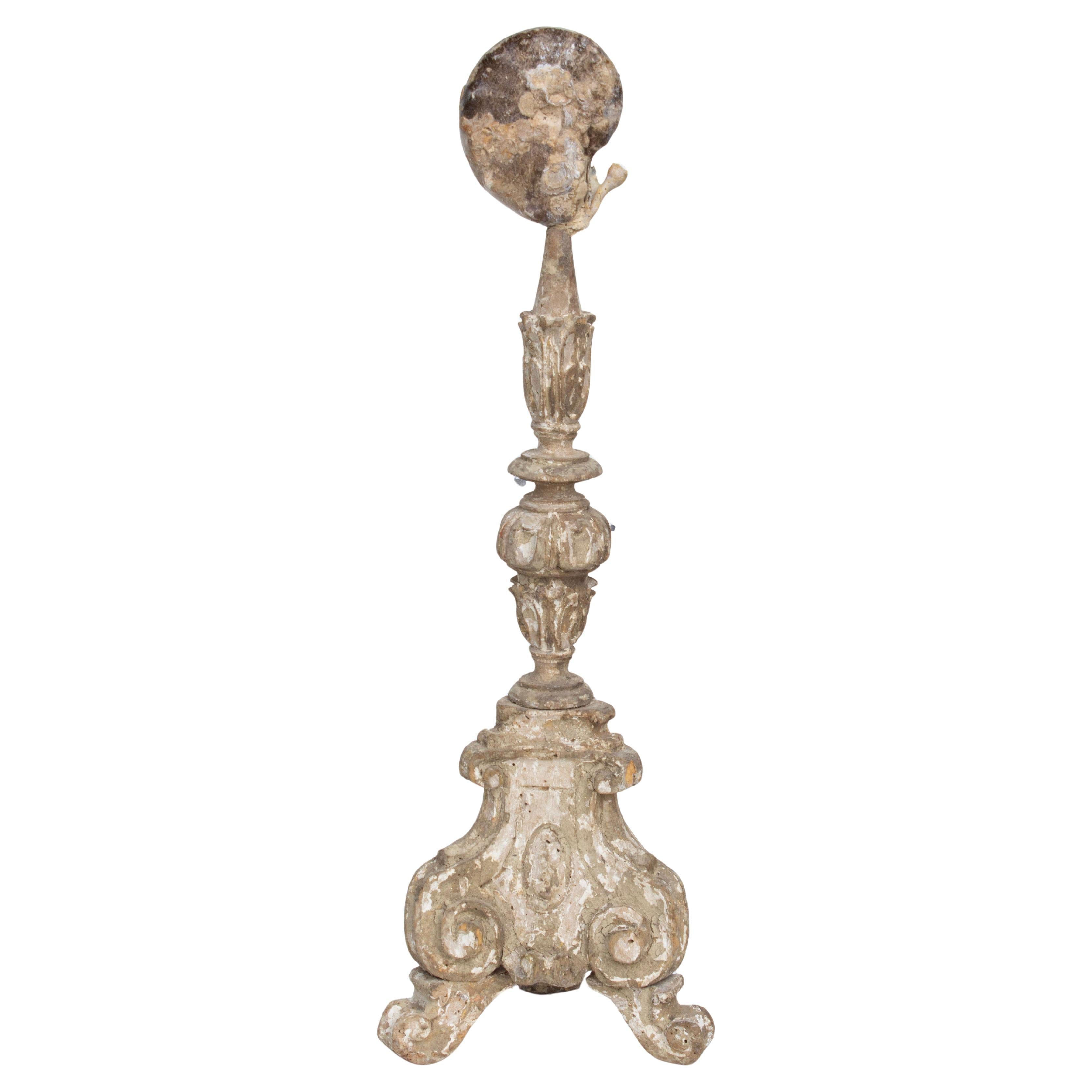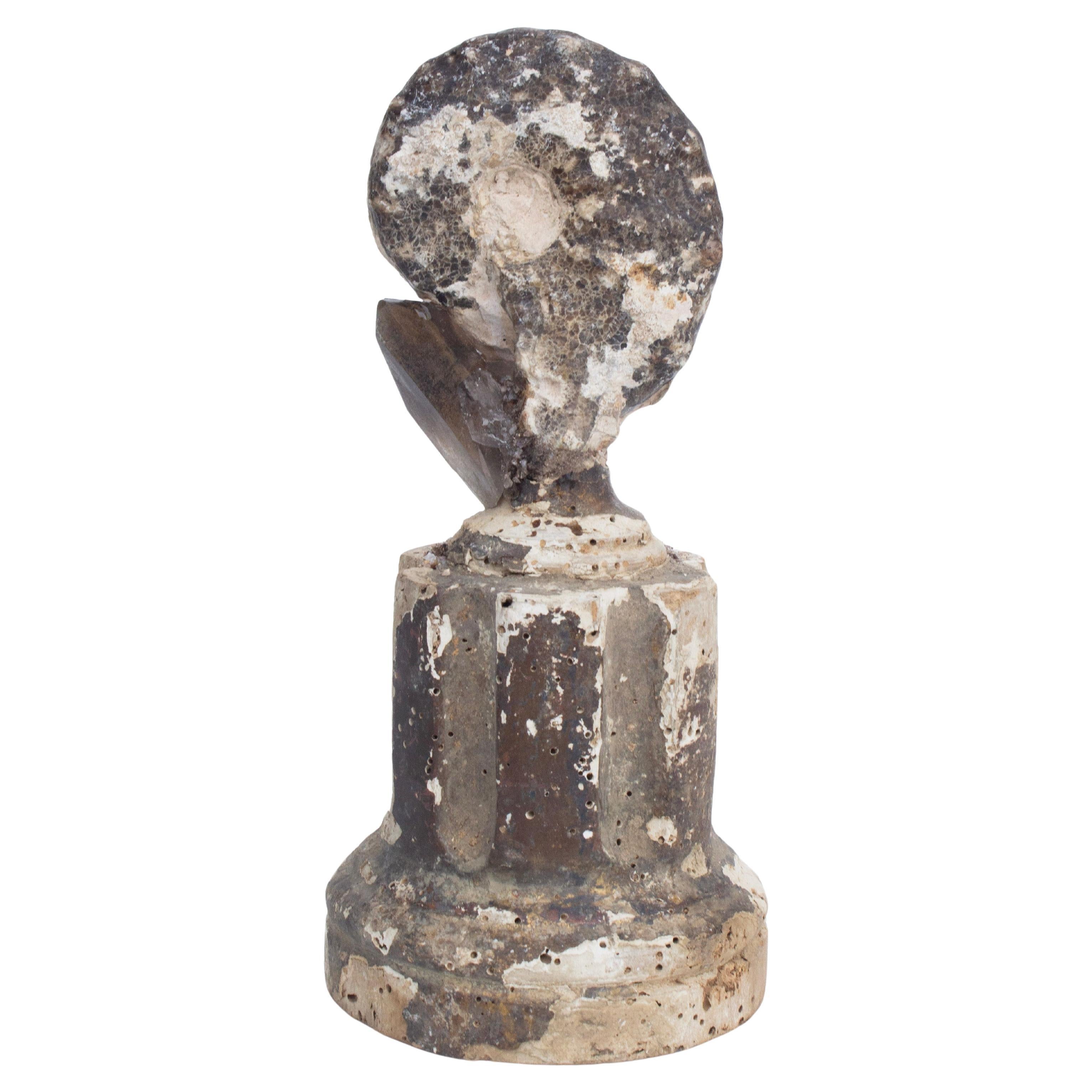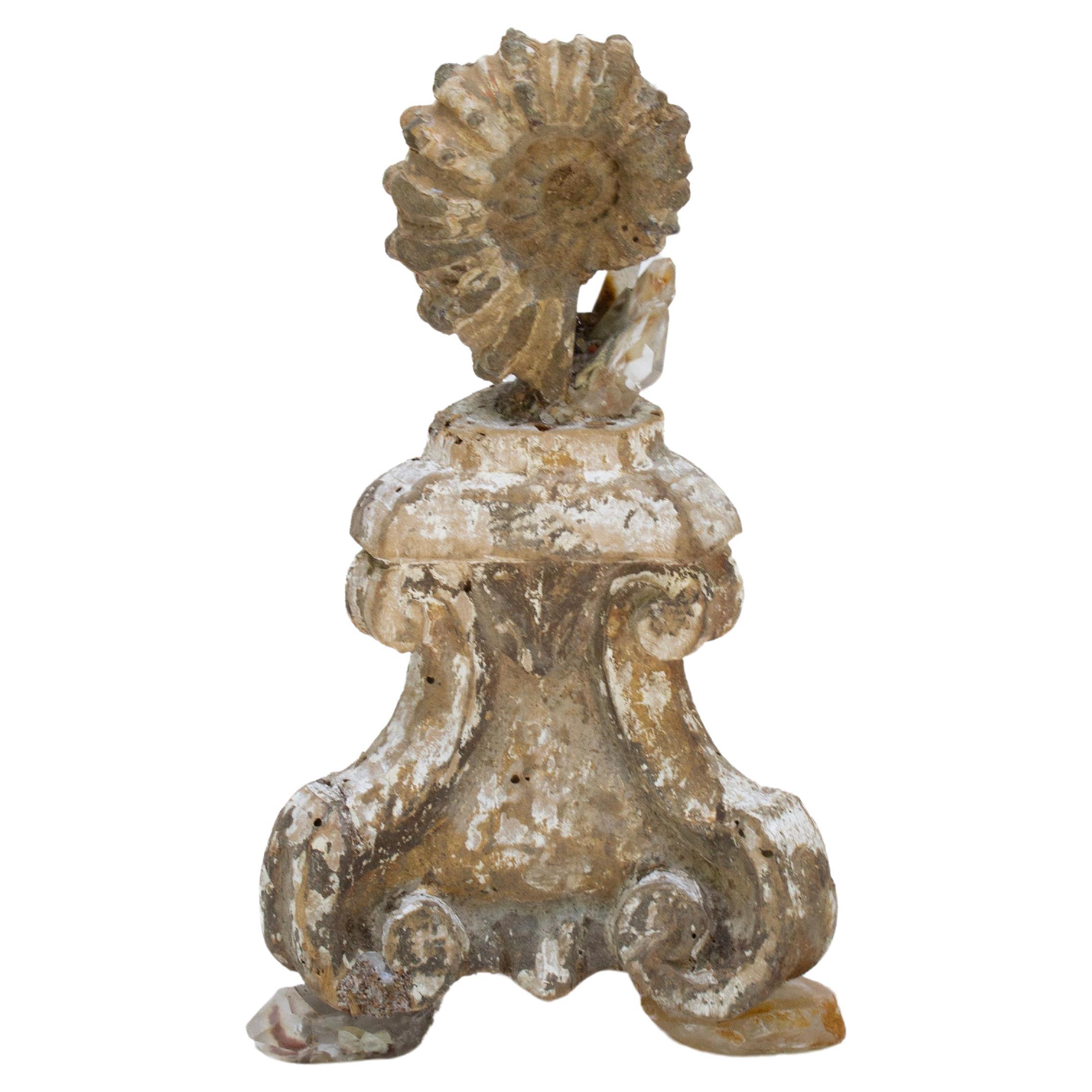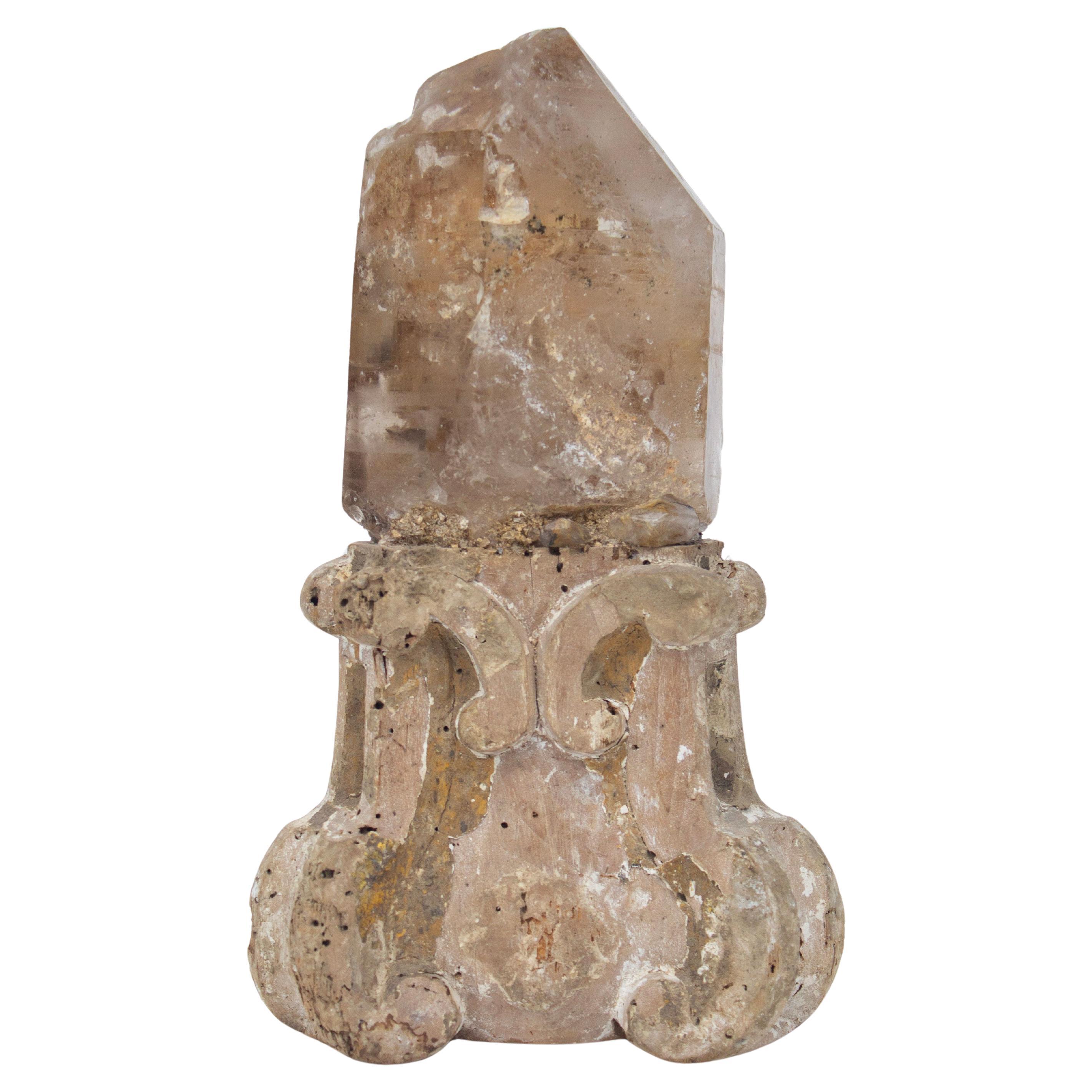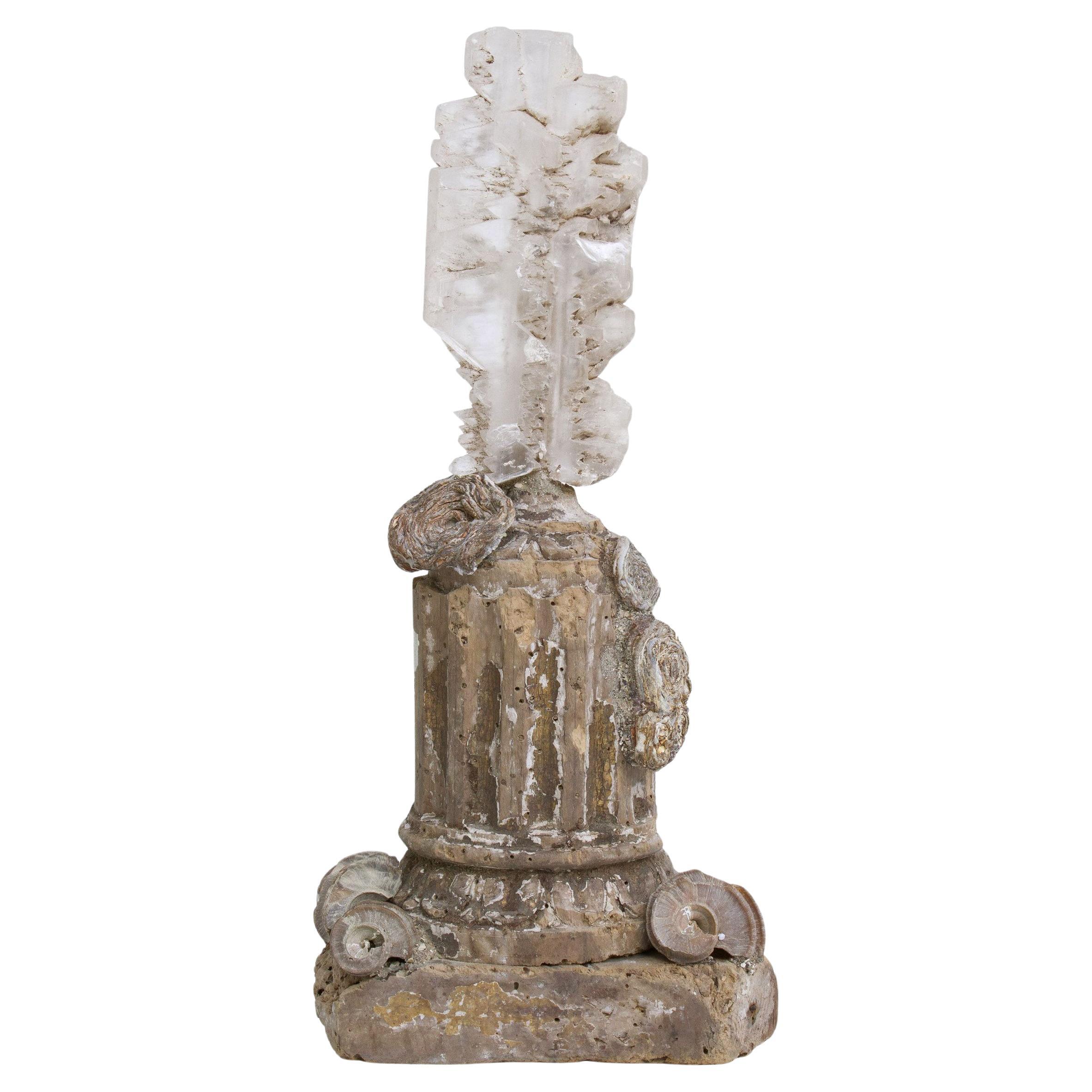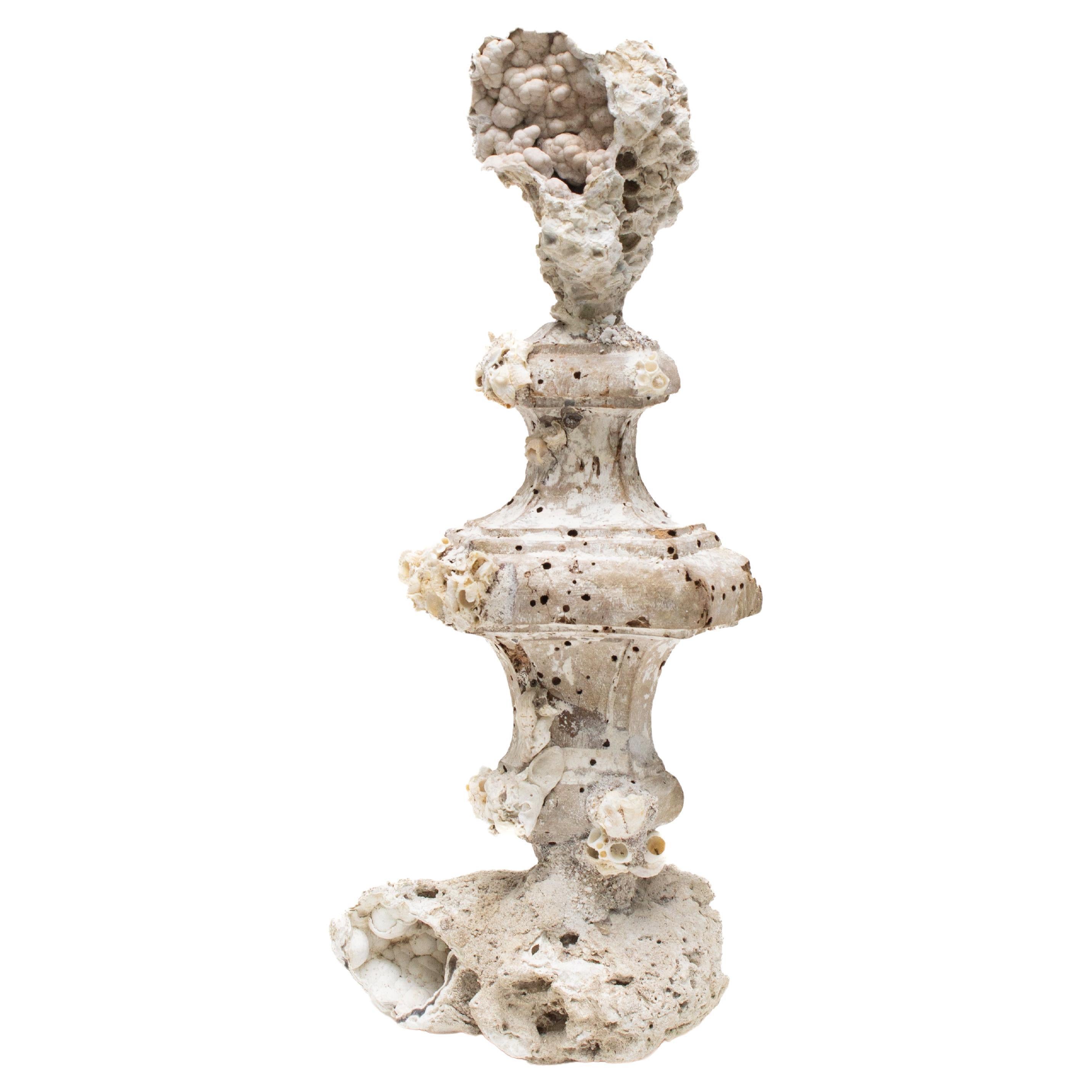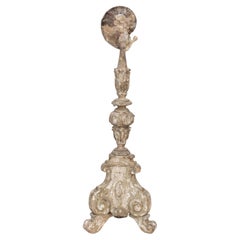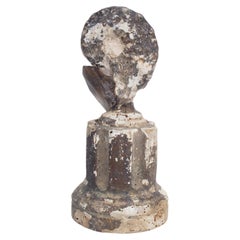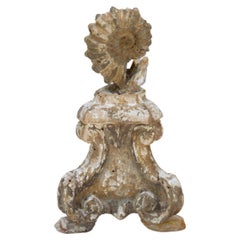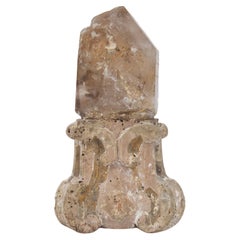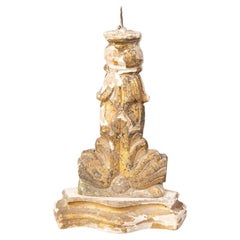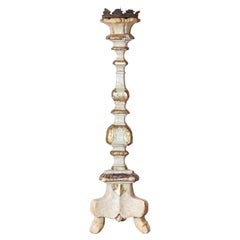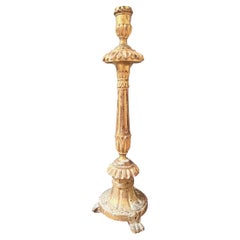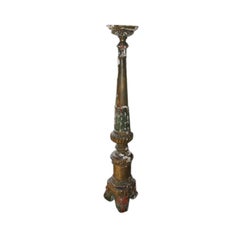Items Similar to 17th Century Italian 'Florence Fragment' Candlestick with Iridescent Ammonite
Want more images or videos?
Request additional images or videos from the seller
1 of 8
17th Century Italian 'Florence Fragment' Candlestick with Iridescent Ammonite
$1,850
£1,410
€1,611.72
CA$2,602.83
A$2,851.32
CHF 1,500.83
MX$34,031.29
NOK 19,131.73
SEK 17,489.28
DKK 12,039.25
About the Item
17th Century Italian candlestick base from Tuscany saved from the Florence flood and topped with free formed iridescent ammonite. This fragment is from a church in Florence. It was found and saved from the historic flooding of the Arno River in 1966. There is still the original paint and silt left on the pieces to uphold the integrity, craftsmanship, and history of the sculptural fragment. The color of the mineral coordinates effortlessly with the fragment's original features and remnants of the flood.
The piece is put together by Jean O'Reilly Barlow, the artist and creative director of Interi. The date of manufacture reflects when she created the piece and the period shows that the fragment artifact is originally 17th century.
The exhibition of the Florence Fragment Collection will premiere on October 12th with the Museo de’ Medici and will close November 10th. The Museo de' Medici or “the Medici Museum” is located in the monumental Rotonda Brunelleschi which was designed in 1432 and built by Filippo Brunelleschi, a famous Italian architect who also built the Florence dome. He is also considered a founding father of Renaissance architecture. The Museo de’ Medici is devoted to preserving the history of the Medici family and exhibiting precious collections of works of art, historical relics, original documents, faithful reconstructions and multimedia installations.
“I am honored to present this collection with the Museo de’ Medici with the city where the pieces found their origin and precious history,” says Jean O'Reilly Barlow, the artist and founder of Interi. “This collection is to honor the history of Florence and to show the beauty and resilience the city holds. It is the birthplace of the renaissance and this collection pays tribute to the rebirth after the flood.
While many fragments are distressed due to age, these Florence fragments in particular stand apart. They symbolize a history that has been carried through the flood, to the Italian store house, collected by the Interi studio, shown in the museum, and now can be purchased for the modern home or gallery.
- Creator:Interi (Artist)
- Dimensions:Height: 14 in (35.56 cm)Width: 8 in (20.32 cm)Depth: 8.5 in (21.59 cm)
- Style:Rococo (Of the Period)
- Materials and Techniques:
- Place of Origin:
- Period:
- Date of Manufacture:2024
- Condition:Additions or alterations made to the original: Interi transforms Italian artifacts using artistic methods and contemporary interpretations. The Italian artifact has been joined together with the natural elements to create a new sculptural piece. Wear consistent with age and use.
- Seller Location:Dublin, IE
- Reference Number:1stDibs: LU5127141912172
About the Seller
5.0
Vetted Professional Seller
Every seller passes strict standards for authenticity and reliability
Established in 2007
1stDibs seller since 2019
194 sales on 1stDibs
- ShippingRetrieving quote...Shipping from: Columbia, SC
- Return Policy
More From This Seller
View All17th Century 'Florence Fragment' Candlestick with Natural Ammonite Shell
By Interi
Located in Dublin, Dalkey
17th Century Italian candlestick fragment topped with a complete and natural ammonite shell. This Italian fragment is from a church in Florence. It was found and saved from the histo...
Category
Antique 17th Century Italian Rococo Mounted Objects
Materials
Shell, Wood
18th Century Italian 'Florence Fragment' with Smokey Crystal Quartz and Ammonite
By Interi
Located in Dublin, Dalkey
18th century candlestick base from Tuscany mounted with a coordinating ammonite and dark, smoky quartz crystal point. This fragment is from a church in Florence. It was found and sav...
Category
Antique 18th Century Italian Rococo Mounted Objects
Materials
Rock Crystal, Quartz
18th Century Italian 'Florence Fragment' with an Ammonite and Crystal Quartz
By Interi
Located in Dublin, Dalkey
18th century Italian "Florence Fragment" candlestick base mounted and adorned with quartz crystals and topped with an ammonite.
This fragment is from a church in Florence. It was found and saved from the historic Florence Flood of 1966. It is part of the The Florence Fragment Collection which is exhibiting with Museo de’ Medici in Florence, Italy this fall. This is a collection of historical fragment...
Category
Antique 18th Century Italian Rococo Mounted Objects
Materials
Rock Crystal, Coral, Gold Leaf
17th Century 'Florence Fragment' Candlestick Base with Rutile Quartz Crystal
By Interi
Located in Dublin, Dalkey
17th century Italian candlestick base fragment from Tuscany mounted with a rutile quartz crystal. This fragment is from a church in Florence. It was found and saved from the Florence...
Category
Antique 17th Century Italian Rococo Mounted Objects
Materials
Rock Crystal, Quartz, Gold Leaf
18th Century Italian 'Florence Fragment' Candlestick with Fishtail Selenite
By Interi
Located in Dublin, Dalkey
18th century Italian "Florence Fragment" candlestick base mounted with a fishtail selenite and decorated with chalcedony rosettes and ecphora shells.
This fragment is from a church ...
Category
Antique 18th Century Italian Rococo Mounted Objects
Materials
Rock Crystal, Crystal, Gold Leaf
18th Century Italian 'Florence Fragment' Candlestick Base with Fossil Coral
By Interi
Located in Dublin, Dalkey
18th century Italian "Florence Fragment" candlestick base with fossil coral and coordinating shells on a rock coral base.
This fragment is from a church in Florence. It was found an...
Category
Antique 18th Century Italian Rococo Mounted Objects
Materials
Coral, Rock Crystal, Gold Leaf
You May Also Like
19th Century Italian Giltwood Pricket Candlestick
Located in Pearland, TX
A beautiful late 18th-century to early 19th-century Italian carved gilt wood gold leaf pricket altar candlestick. It is 11" tall to the top of the pricket. This gorgeous candlestick ...
Category
Antique Early 19th Century Italian Candlesticks
Materials
Giltwood
$575 Sale Price
35% Off
Italian 18th Century Painted Wood Candlestick from Tuscany with Gilt Accents
Located in Atlanta, GA
An Italian 18th century painted wood candlestick from Tuscany with touches of gilt. Created in central Italy during the 18th century, this Tuscan candlestick features a painted struc...
Category
Antique 18th Century Italian Candlesticks
Materials
Wood
Baroque altar candlestick in gilded wood, Italy or Portugal, circa 1720–1740
Located in Beuzevillette, FR
Impressive Baroque altar candlestick finely carved in wood and gilded with gold leaf.
The piece stands on a tripod base with lion paw feet, supporting an elegant baluster stem adorne...
Category
Antique 18th Century Italian Rococo Candlesticks
Materials
Wood
Large Late 18th Century Italian Candlestick
Located in Napa, CA
Large Italian candlestick from the late 18th Century. Beautifully carved and painted with gold, green and red accents. Has one joint which ...
Category
Antique 18th Century and Earlier Italian Candle Holders
Materials
Paint, Plaster, Wood
Florentine Candlestick in Lathed and Silvered Wood, Late 17th Century
Located in Prato, IT
Italy, Firenze, late 17th century
Simple but elegant typical Florentine candlestick.
It has cracks and small lacks of the pinstripe typical o...
Category
Antique Late 17th Century Italian Renaissance Candlesticks
Materials
Sheet Metal
French 19th C. Zinc Finial Fragment on Custom Iron Stand, 3 Ft Height
Located in Atlanta, GA
A French zinc finial fragment from the 19th century presented on custom stand. This antique decoration from France features a nicely detailed, three-dimensional, zinc architectural p...
Category
Antique 19th Century French Architectural Elements
Materials
Iron, Zinc
More Ways To Browse
De Medici
Ammonite Sculpture
Iridescent Ammonite
Jet Engine Fan Blade
Mexican Colonial Antiques
Mid Century Mailbox
Niels Helledie
Richters Anchor Stone Blocks
Sawtooth Fish Bill
Tibetan Headdress
Timor Leste
Antique Goat Bell
Antique Stone Mounting Block
Butlers Ball
C Jere Sea Urchin
Cast Iron Stagecoach
Dogon Lock
Dungeon Throne
